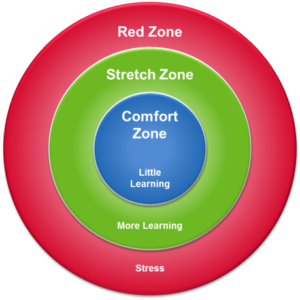About the Authors:
  Dan Hudock, Ph.D., CCC-SLP; is an Associate Professor in Communication Sciences and Disorders at Idaho State University and the Founding Director of the Northwest Center for Fluency Disorders, which offers an interprofessional intensive stuttering clinic with Speech-Language Pathologists and Counselors using Acceptance and Commitment Therapy. His personal experiences stuttering have motived his research interests including psycho-social-emotional aspects of fluency disorders, interprofessional collaborations with mental health professionals, and the neuroscience bases of stuttering using high-density EEG. Dan Hudock, Ph.D., CCC-SLP; is an Associate Professor in Communication Sciences and Disorders at Idaho State University and the Founding Director of the Northwest Center for Fluency Disorders, which offers an interprofessional intensive stuttering clinic with Speech-Language Pathologists and Counselors using Acceptance and Commitment Therapy. His personal experiences stuttering have motived his research interests including psycho-social-emotional aspects of fluency disorders, interprofessional collaborations with mental health professionals, and the neuroscience bases of stuttering using high-density EEG. |
  Chad Yates, Ph.D., LPC, joined the ISU Department of Counseling in the fall of 2013. He received his Ph.D. in Counselor Education and Supervision from Kent State University and his M.A. in Community Counseling from the University of Toledo. Before coming to ISU, Chad worked as a mental health and substance abuse counselor in Kent, Ohio. He also was a part-time instructor at Kent State University, Indiana University of Pennsylvania, and Youngstown State University. Chad has served as the Mental Health Coordinator for the Northwest Center for Fluency Disorders at ISU over several years. His counseling experience includes working with individuals with substance abuse disorders, batterers and survivors of domestic violence, families, and as a generalist treating many diverse client issues His research interests include evidence-based practice in counseling, client-focused outcome evaluation, and the treatment of individuals with substance abuse and co-occurring disorders. His personal interests include hiking, camping, skiing, and golfing. Chad Yates, Ph.D., LPC, joined the ISU Department of Counseling in the fall of 2013. He received his Ph.D. in Counselor Education and Supervision from Kent State University and his M.A. in Community Counseling from the University of Toledo. Before coming to ISU, Chad worked as a mental health and substance abuse counselor in Kent, Ohio. He also was a part-time instructor at Kent State University, Indiana University of Pennsylvania, and Youngstown State University. Chad has served as the Mental Health Coordinator for the Northwest Center for Fluency Disorders at ISU over several years. His counseling experience includes working with individuals with substance abuse disorders, batterers and survivors of domestic violence, families, and as a generalist treating many diverse client issues His research interests include evidence-based practice in counseling, client-focused outcome evaluation, and the treatment of individuals with substance abuse and co-occurring disorders. His personal interests include hiking, camping, skiing, and golfing. |
  Tiffani Kittilstved, M.S., CCC-SLP is a Speech-Language Pathologist based out of the Seattle, Washington area as well as a Ph.D. student with Dr Hudock at Idaho State University. She has also been involved with ISU’s Northwest Center for Fluency Disorders Clinic as a supervisor. This experience, along with her own personal experiences as a person who stutters and an SLP specializing in stuttering, have motivated her current research interests, which include covert stuttering; the application of mindfulness, mindful self-compassion, and other counseling approaches into therapy; and the intersectionality of identities among people who stutter. Tiffani is excited to be a part of the ISAD conference for the 3rd year, with her previous submissions of her personal stories having made a huge impact on her along her own journey with stuttering. Tiffani Kittilstved, M.S., CCC-SLP is a Speech-Language Pathologist based out of the Seattle, Washington area as well as a Ph.D. student with Dr Hudock at Idaho State University. She has also been involved with ISU’s Northwest Center for Fluency Disorders Clinic as a supervisor. This experience, along with her own personal experiences as a person who stutters and an SLP specializing in stuttering, have motivated her current research interests, which include covert stuttering; the application of mindfulness, mindful self-compassion, and other counseling approaches into therapy; and the intersectionality of identities among people who stutter. Tiffani is excited to be a part of the ISAD conference for the 3rd year, with her previous submissions of her personal stories having made a huge impact on her along her own journey with stuttering. |
  William Lane, LPC, NCC is a Doctoral Candidate in the Counselor Education and Counseling program at Idaho State University. He is currently in the process of dissertation research regarding shame and its impact in supervision. His clinical experiences include counseling couples, individuals with relationship challenges, older adults, and individuals with developmental disabilities. He is a child advocate who works with Bright Tomorrows Child Advocacy Center, counseling children who have been sexually abused. During his internship experience he worked as a school counseling intern in the local school district and as a clinician for the Northwest Center for Fluency Disorders (NCFD). His experience with the NCFD as an intern is what motivated him to return as a counseling supervisor. In his spare time, he enjoys watching dramatic reality t.v. shows, working out at the gym with his wife, and fishing. William Lane, LPC, NCC is a Doctoral Candidate in the Counselor Education and Counseling program at Idaho State University. He is currently in the process of dissertation research regarding shame and its impact in supervision. His clinical experiences include counseling couples, individuals with relationship challenges, older adults, and individuals with developmental disabilities. He is a child advocate who works with Bright Tomorrows Child Advocacy Center, counseling children who have been sexually abused. During his internship experience he worked as a school counseling intern in the local school district and as a clinician for the Northwest Center for Fluency Disorders (NCFD). His experience with the NCFD as an intern is what motivated him to return as a counseling supervisor. In his spare time, he enjoys watching dramatic reality t.v. shows, working out at the gym with his wife, and fishing. |
  Casey Ulrich, a Certified Speech Language Pathologist, and currently an owner of a private practice. She has been a clinical supervisor for a third year at Idaho State University’s Northwest Center for Fluency Disorders Clinic alongside Dan Hudock Ph.D, CCC-SLP and Chad Yates Ph.D. Casey’s goal as a clinician is to tell those who stutter and those who treat stuttering that “in order to grow you need acceptance, and in order to accept you need to be kind, forgiving and patient with yourself. Start talking to your inner child, tell them all the things that you would say to people you care about most! Be true to yourself, be mindful and compassionate, these are the things that will lead your best self!” Casey Ulrich, a Certified Speech Language Pathologist, and currently an owner of a private practice. She has been a clinical supervisor for a third year at Idaho State University’s Northwest Center for Fluency Disorders Clinic alongside Dan Hudock Ph.D, CCC-SLP and Chad Yates Ph.D. Casey’s goal as a clinician is to tell those who stutter and those who treat stuttering that “in order to grow you need acceptance, and in order to accept you need to be kind, forgiving and patient with yourself. Start talking to your inner child, tell them all the things that you would say to people you care about most! Be true to yourself, be mindful and compassionate, these are the things that will lead your best self!” |
  Kristen Leucuta, originally from Downers Grove, Illinois, a suburb of Chicago is a graduate student at Idaho State University in the Department of Communication Sciences and Disorders. She received a Bachelor’s degree from the University of Kansas in 2016 where she majored in both Speech, Language and Hearing Sciences and Linguistics. She’s worked in Dr. Hudock’s Stuttering Research Laboratory for two years and is completing her thesis with him is researching the level of knowledge and experience SLPs have with fluency disorders; specifically, cluttering. Her passion for this area increased significantly after participating in both the 2018 and 2019 NWCFD-IIISC. Kristen is non-discriminating when it comes to her love for pets. She also likes to travel. Kristen Leucuta, originally from Downers Grove, Illinois, a suburb of Chicago is a graduate student at Idaho State University in the Department of Communication Sciences and Disorders. She received a Bachelor’s degree from the University of Kansas in 2016 where she majored in both Speech, Language and Hearing Sciences and Linguistics. She’s worked in Dr. Hudock’s Stuttering Research Laboratory for two years and is completing her thesis with him is researching the level of knowledge and experience SLPs have with fluency disorders; specifically, cluttering. Her passion for this area increased significantly after participating in both the 2018 and 2019 NWCFD-IIISC. Kristen is non-discriminating when it comes to her love for pets. She also likes to travel. |
Outline
- Introduction – connect the experience of stuttering / finding the value of their voice etc through growth of self-compassion
- Mindful Self-Compassion defined – suffering etc
- Mindfulness – defined
- Self-Compassion defined
- Mindful self-compassion strategies applied and integrated with stuttering
This year’s 2019 International Stuttering Awareness Day (ISAD) online conference theme, Growth Through Speaking, is one of true meaning and value to us. It aligns with a practice we integrate into our interprofessional therapy for stuttering called Mindful Self-Compassion.
Growth for example can take on many meanings. Physical growth affects the structure, size, and presence of objects and alters how they are perceived, interacted with, or utilized. When a tree is taken care of, nourished, and supported it grows larger and may produce more shade, fruit, lumber etc. However, when a tree’s growth happens too rapidly without encountering any resistance from wind or other natural factors, its roots can become too weak and it can become uprooted in a storm. Similarly, when unsupported quick growth happens to a fruit or vegetable it may detach from its base and rot or may lose the characteristic flavor profiles and desire, becoming more bitter, less succulent, and harder. The meaning of growth is framed and influenced by the being it affects, surrounding environment, and the nurturing support provided. Growth in the senses of self-awareness / conceptualization / confidence / efficacy and overall mental wellbeing require similar elements as we’ve described for physical growth.
The word through could be interpreted as a journey, actively traveling from a site of origin or current location / state to a desired destination (either known or unknown). As we travel, see new sites, and explore unknown areas and phenomena, we often rely on maps, guides, and advice from others who are more familiar with the terrain to help us along our way. Prior to starting a journey, we typically evaluate our physical and mental state; where we are, what’s around us, why we’re there, if we want to stay where we are or if we want to go somewhere different, and what potential challenges and benefits may lie ahead. Going through our journeys discovering the value of our words and gaining the confidence and resilience to speak them requires similar understanding, awareness, and compassion, often guided by others.
As people who stutter (PWS), we may experience conversations with others and life from a framing of survival, instead of speaking with them. Stuttering can be all consuming from the point we wake up until when we go to bed. We may predetermine to whom we will talk, and when and what we will say primarily based on the perception of our stuttering or fluency. PWS frequently report negative experiences when communicating with others, such as dramatically heightened anxiety, feeling frozen, a desire to escape, time-pressure, a vast sense of loss of control, destructive self-talk, judgment, evaluation, etc. However, a progressive experiential theme frequently reported from successful stuttering therapy is transitioning from tendencies of avoidance to acceptance and openness, which reduces many of these negative experiences (Irani, Gabel, Daniel, & Hughes, 2012; Plexico, Manning, & DiLollo, 2005). To us, Growth Through Speaking represents this progressive transition where PWS discover the value of their voice and start living life on their terms. They no longer simply respond trying to be as fluent as possible, changing what they intend to say, or talk at people instead of with them due to spending so much time planning how they are going to say what they can and not truly hearing what their communication partner is saying or engaging in the conversation, but instead they grow into being more present and connected to others through speaking.
Mindful Self-Compassion is a practice that can help us in our journey of Growth Through Speaking. Dr. Kristin Neff (2019) presents the following description for self-compassion:
“Having compassion for oneself is really no different than having compassion for others. Think about what the experience of compassion feels like. First, to have compassion for others you must notice that they are suffering. If you ignore that homeless person on the street, you can’t feel compassion for how difficult his or her experience is. Second, compassion involves feeling moved by others’ suffering so that your heart responds to their pain (the word compassion literally means to “suffer with”). When this occurs, you feel warmth, caring, and the desire to help the suffering person in some way. Having compassion also means that you offer understanding and kindness to others when they fail or make mistakes, rather than judging them harshly. Finally, when you feel compassion for another (rather than mere pity), it means that you realize that suffering, failure, and imperfection is part of the shared human experience. …
Self-compassion involves acting the same way towards yourself when you are having a difficult time, fail, or notice something you don’t like about yourself. Instead of just ignoring your pain with a “stiff upper lip” mentality, you stop to tell yourself “this is really difficult right now,” how can I comfort and care for myself in this moment?
Instead of mercilessly judging and criticizing yourself for various inadequacies or shortcomings, self-compassion means you are kind and understanding when confronted with personal failings – after all, who ever said you were supposed to be perfect?
You may try to change in ways that allow you to be more healthy and happy, but this is done because you care about yourself, not because you are worthless or unacceptable as you are. Perhaps most importantly, having compassion for yourself means that you honor and accept your humanness. Things will not always go the way you want them to. You will encounter frustrations, losses will occur, you will make mistakes, bump up against your limitations, fall short of your ideals. This is the human condition, a reality shared by all of us. The more you open your heart to this reality instead of constantly fighting against it, the more you will be able to feel compassion for yourself and all your fellow humans in the experience of life.”
Mindfulness is a nonjudgmental intentional awareness brought to the present moment that includes our thoughts, feelings, bodily sensations, and surrounding environment (for more information on Mindfulness or Meditative Practices please visit https://www.mindful.org/what-is-mindfulness/). For example, when we experience anxiety or stress, we have the ability to consciously increase our awareness of those physical bodily sensations by closing our eyes and performing a self-scan, drawing our attention inward. Identifying and describing the physical sensations experienced increases our awareness and allows us to connect to the emotion and experience at that moment of time. Consciously directing your attention to nonjudgmentally observing what anxiety or stress feels like to you helps reduce emotional reactivity and gets us out of our own heads. Not surprisingly as is the case with most practices an increased awareness and mindfulness can be grown and nurtured overtime. Imagine how calming it could be to focus on the physical sensation of your stomach contacting your shirt (and what that actually feels like) while you are in a moment of stuttering. This mindful act reduces the experienced emotion, emotional reactivity, and negative self-talk occurring at that moment. It allows you to be more connected to yourself, your experiences, and your communication partner in a deescalated state.
Dr. Kristin Neff (2019) presents the three elements of Mindful Self-Compassion as: 1) Self-kindness versus Self-judgment, 2) Common humanity versus isolation, and 3) Mindfulness versus Over-identification. She describes them as (Neff, 2019):
“1) Self-kindness versus Self-judgment: Self-compassion entails being warm and understanding toward ourselves when we suffer, fail, or feel inadequate, rather than ignoring our pain or flagellating ourselves with self-criticism. Self-compassionate people recognize that being imperfect, failing, and experiencing life difficulties is inevitable, so they tend to be gentle with themselves when confronted with painful experiences rather than getting angry when life falls short of set ideals. People cannot always be or get exactly what they want. When this reality is denied or fought against suffering increases in the form of stress, frustration and self-criticism. When this reality is accepted with sympathy and kindness, greater emotional equanimity is experienced.
2) Common humanity versus isolation: Frustration at not having things exactly as we want is often accompanied by an irrational but pervasive sense of isolation – as if “I” were the only person suffering or making mistakes. All humans suffer, however. The very definition of being “human” means that one is mortal, vulnerable and imperfect. Therefore, self-compassion involves recognizing that suffering and personal inadequacy is part of the shared human experience – something that we all go through rather than being something that happens to “me” alone.
3) Mindfulness versus Over-identification: Self-compassion also requires taking a balanced approach to our negative emotions so that feelings are neither suppressed nor exaggerated. This equilibrated stance stems from the process of relating personal experiences to those of others who are also suffering, thus putting our own situation into a larger perspective. It also stems from the willingness to observe our negative thoughts and emotions with openness and clarity, so that they are held in mindful awareness. Mindfulness is a non-judgmental, receptive mind state in which one observes thoughts and feelings as they are, without trying to suppress or deny them. We cannot ignore our pain and feel compassion for it at the same time. At the same time, mindfulness requires that we not be “over-identified” with thoughts and feelings, so that we are caught up and swept away by negative reactivity.”
As we can tell from Dr. Neff’s descriptions above the elements of Mindful Self-Compassion are based in observation through a humanist perspective. Basically we grow our ability to identify thoughts and emotions and by observing them through a humanist lens we cut ourselves some slack and are less harsh / more forgiving, showing ourselves some self-compassion.
One of the most meaningful Mindful Self-Compassion activities that I, Dan, have taken part in occurred during one of our Northwest Center for Fluency Disorders Interprofessional Intensive Stuttering Clinics (NWCFD-IISC; a two-week residential intensive clinic with Speech Language Pathologists and Mental Health Professionals collaborating on the treatment of stutter, please visit www.northwestfluency.org) a few years ago. A Counseling supervisor, Rebecca, presented an adorable childhood picture of herself to the group and discussed how she would NEVER let anyone talk to that child the way that we as humans regularly talk to ourselves. By the end of the discussion there wasn’t a dry eye in the room! This was not only because of the sadness connecting with Rebecca’s pain or story; it was also the awareness that we all gained about how we do the same thing. We as humans talk so negatively to ourselves, ways that we would never dream of speaking to anyone else, and in ways that we should not / would not let others talk to us. This heartening experience is why we (the authors) have presented adult and childhood pictures of ourselves. Stuttering very often comes with a lifetime of sadness, heartache, resentment, shame guilt, frustration, anger, and senses of inadequacy, that we’re not good enough. Life is hard enough as is, but we as PWS often make it even harder on ourselves. How would you talk to your childhood self?
Why do we do this, and more so what can we do to change it!?! Growing nonjudgmental awareness of our emotional state, physical sensations, and suffering through self-compassion allows our hearts and minds to respond differently. When we have compassion for others and ourselves, we realize that suffering, failure, and imperfection are natural parts of the human experience, not something to be further punished. A practical way of applying this mindful growth practice is through challenge circles (see figure below).

As we increase our non-judgmental intentional awareness regarding how we physically experience sensations of anxiety, stress, and stuttering etc we become better at identifying and realizing what emotional states we’re in and how much resilience or tolerance we have at that time for growth to occur. If we reside in our comfort zone little change can occur. When we lean into our discomfort and reach the challenge, stretch / growth, zone, then just like a tree that leans into the wind and natural disturbances around it, sustained growth with deeper roots and supports can occur. However, if we become flooded and stressed, entering into an overwhelmed, red, zone little effective positive growth can occur and we may feel like avoiding or escaping. In this overwhelmed place we might not understand what emotions we’re experiencing and may simply be shutdown or reactive. Growth through increased self-identification, awareness, and compassion allows us to better lean into our discomfort and challenge ourselves when we’re ready for it. Similarly, identifying and understanding when we’re in an overwhelmed state, and having self-compassion, allows us to prioritize ourselves and do self-care to enable future growth to occur.
Below we present a number of practices that can be easily and beneficially applied to stuttering:
- Mindfulness incorporated into stuttering therapy has recently emerged as a very beneficial practice, which can occur a number of ways (Beilby & Byrnes, 2012; Beilby, Byrnes, & Yaruss, 2012; Boyle, 2011; Plexico & Sandage, 2011; ).
- Grounding – Directing your attention and present moment awareness to the physical world at that moment in time reduces emotional reactivity, negative self-talk, etc while increasing resilience and tolerance. It also increases the reported quality of the interaction and connection experienced with others. This can be done by focusing on physical bodily sensations (stomach on shirt), the sensation of touch as you feel something in your hand, press you toes against your shoes / group, intentional breathing etc. It can also be done by listing a certain number of items for each sense (e.g., five things I see / hear / feel etc) or counting certain objects that you observe or internally stating the colors you see etc.
- Pseudostuttering – When we stutter intentionally and on our terms we seldom experience the degree of negativity described earlier. Leaning into the discomfort of the challenge zone, through mindful self-compassion, embracing something that we have spent much time and effort trying to hide and avoid, that is so vulnerable to us, allows us to experience it and communication differently.
- Defusion: The act of disconnecting self from thoughts. A persona who stutters may experience negative thoughts such as “I am less than human.” Defusion is when that thought is observed by the self for what it is, just a thought. Thoughts do not equal reality. You are not your thoughts. You are separate from your thoughts. Kindly acknowledge your thoughts, and then let them move on.
References
Beilby, J. M., & Byrnes, M. L. (2012). Acceptance and commitment therapy for people who stutter. Perspectives on Fluency and Fluency Disorders, 22(1), 34-46.
Beilby, J. M., Byrnes, M. L., & Yaruss, J. S. (2012). Acceptance and commitment therapy for adults who stutter: Psychosocial adjustment and speech fluency. Journal of Fluency Disorders, 37(4), 289-299.
Boyle, M. P. (2011). Mindfulness training in stuttering therapy: A tutorial for speech-language pathologists. Journal of fluency disorders, 36(2), 122-129.
Irani, F., Gabel, R., Daniels, D., & Hughes, S. (2012). The long term effectiveness of intensive stuttering therapy: A mixed methods study. Journal of Fluency Disorders, 37(3), 164-178.
Neff, K. (2019). Self-Compassion. Retrieved from: https://self-compassion.org/the-three-elements-of-self-compassion-2/
Plexico, L., Manning, W. H., & DiLollo, A. (2005). A phenomenological understanding of successful stuttering management. Journal of fluency disorders, 30(1), 1-22.
Plexico, L. W., & Sandage, M. J. (2011). A mindful approach to stuttering intervention. Perspectives on Fluency and Fluency Disorders, 21(2), 43-49.
Heaps, E. (2017). Comfort, Stretch and Don’t Panic. Retrieved from: https://trainingindustry.com/articles/performance-management/comfort-stretch-and-dont-panic/
![]()

As a future speech-language pathologist, I found this reading informative and beneficial in regards to counseling and acceptance strategies for clients who stutter. The most memorable piece of information I took away reviewed the negative self-talk we engage in as human beings. We become so critical of ourselves and forget to treat ourselves with self-love and acceptance. To address these feelings I hope to implement mindfulness and mediation into my future practice. I will now preach the importance of self-compassion in the journey of self-acceptance for PWS. As a question, I would like to know what advice you would give to an individual beginning their journey for finding self-compassion and how one can complete the journey when negative emotions and judgement begins to creep back?
Thank you for your post. Very true. Acceptance-based approaches have much support within the research literature, which is very often paralleled by positive portrayals from those of us who stutter. You touch on an important point, negative thoughts emotions (and that doubting voice in the back of your head) will always be there, but ACT, and many other cognitive-behavioral approaches teach ways to actively alter the relationship to those. So you’re not likely to get rid of them, but you can influence them and their impact on you.
As for mindfulness and self-compassion there are many mindful self-compassion courses or practices available through face-to-face instruction, online, or guided practices via podcast etc.
Thank you for sharing this article and the information in it. I am particularly drawn to the idea of speaking to your childhood self and finding compassion in that way. I know I am never as hard on others as I am on myself, and I purposefully remind myself of that when I feel those negative emotions and self-judgement creep in. It takes conscious effort, but I have found my outlook improving and my willingness to to challenge myself increase.
How do you envision this approach being incorporated into a traditional model of speech therapy for PWS? As a speech therapist, how do you document the progress in ways payors will understand?
Thanks for sharing Megan!
Similar to how you experienced at the interprofessional stuttering clinic this summer. Using psychoeducation to teach the foundations and them implement them in practice. This can, and should, occur within typical clinical settings as well as intensive programs. We’ll be covering those in the class soon, but Yaruss & Reardon-Reeves do a great job of highlighting holistic goal writing in their practical guide books. Also, Rita Thurman has a great post this ISAD conference regarding that using the HOPE acronym…
I really enjoyed this post! As a future SLP, I found this paper to be informative and beneficial especially for SLPs in the field who work with PWS. As a question, how would you counsel an individual who feels negative toward their stutter during their journey, so they are able to complete the rest of their journey? (Without this feeling of negativity)
Thanks for your post Carly! There are many ways to do this, but integrating basic interpersonal relational counseling skills and having a person-centered focus is a great start. The book More than Fluency provides a survey overview of many approaches to do this. Also the research consistently reveals that when PWS associate with others who stutter they experience much positively within their journey.
Thank you for breaking down the definition and components of mindful self-compassion and its application to persons who stutter. As I read through your article, particularly as you walked the audience through focusing on the physical sensation of your stomach touching your shirt during a moment of stuttering, it reminded me of an analogy about the mind. During a conversation with a psychologist, he compared the mind to a television set that is always on. He said we don’t have the ability to turn off our mind, but we have the ability to choose the channel. I have a question, but it may be better suited in one of my graduate courses. What is in an speech-language pathologist’s scope of practice when treating a person who stutters and using mindful self-compassion? Would an SLP need additional training to fully implement this approach in treatment?
Thank you,
Cami Finehout
Thanks for your post Cami. So true. We have the ability to adjust the channel of volume, but it’s always likely to be on. I’m happy to answer this in class (if you remind me). Our “counseling” roles and responsibilities aren’t well defined and therefore it requires your subjectivity and professional judgement to determine where you will draw your line. I use “as related to communication” for my indicator of scope of practice. Mindfulness and mindful self-compassion are broad-based approaches that are frequently utilized by a wide array of practitioners, so understanding the approaches and enacting strategies to support them should be beneficial while knowing that additional training will aide in efficacy and effectiveness.
Hi Dr. Hudock, Dr. Yates, Tiffani, William, Casey, and Kristen,
As a future SLP clinician, I’m seeing that mindful self-compassion could bring a lot of benefit, not just to my practice, but also to my personal life. I feel strongly that clinicians should practice what they preach, and a self-compassion practice that increases vulnerability would help us get right in the trenches with our clients. It is hard to teach vulnerability by telling without doing. I imagine it’s important to maintain a daily mindfulness practice so that we are better able to remain present and guide our clients on their journeys. I really appreciate your insight, and I feel hopeful after reading your article.
Thank you,
Taylor
Hi Taylor,
Completely agree with you!
Thanks!
As a future SLP, I found the growth analogy of the tree and the journey analogy both to be very accessible uses of imagery. I could see their use in therapy, as well as the description of compassion and how it should extend to the self. While reading this, I found myself thinking that I know it is harmful to engage in negative self-talk, but yet I do it anyway – Why do I do this? This helped me realize that this is a considerable factor that PWS encounter in undergoing therapy, a reason resistance to change is such a barrier. Making this shift takes a lot of effort, redirection, and time. If I am struggling with this, I can only imagine the challenges that PWS face in modifying long held patterns of negative framing of the self within their stuttering experience. This gives me greater patience and understanding for the individual, and with it I feel better able to offer the support and guidance needed to help a PWS on their growth journey. On a related note, I am wondering if any of you can provide me with some examples of guiding a PWS in reframing self-judgement to self-kindness in therapy. What does this look like within a session and across time? Thank you for your influential words.
Thanks for your post Chanah. It is a very difficult practice, but one that the benefits grow from over time. Scott Palask’s publication on Acceptance and Commitment Therapy (ACT) does a great job of presenting a conceptual framework with application for these notions. There are also other publications on CBT, REBT, DBT, etc and the book More than Fluency presents a survey overview of many of these cognitive practices also. Hope this helps.
I think this was explained very well and was very moving to read. I really enjoyed the tree analogy, and think that self-awareness is extremely important although sometimes hard to achieve fully. Something that I found very beneficial to myself was realizing that the way I sometimes talk to myself is way more critical than what I would ever think about saying about another person and “you are separate from your thoughts”. Thank you for this useful outlook and I hope that I can apply it to myself and my future work as an SLP.
Thanks Sydney.
As a future SLP, I found this reading to be very informative on the professional and personal level. I believe in the field of speech-language pathology, we could benefit from having more compassion and it begins with ourselves. What are some ways I could incorporate the mindful elements into therapy?
Thanks for your post Tracy. Mike Boyle has a great practically-based publication on Mindfulness within SLP. Highly recommend reading it.
Incorporating “Growth through Speaking” theme into therapy session with PWS is critical. Many PWS have battle with internal issues based on the experiences they have had. Many PWS have had bad experiences with speech language pathologists because the goal of therapy was to stop stuttering events and was unsuccessful.
This paper encourages that the primary focus of therapy should not focus on trying to stop the stuttering events, but to focus on desensitizing the patient’s negative emotions contributed to stuttering. In your words, my primary focus in therapy is to allow the patient to grow into their “…senses of self-awareness / conceptualization / confidence / efficacy and overall mental.” You all did a great job with explaining how to approach therapy sessions when working with PWS!
Thanks!